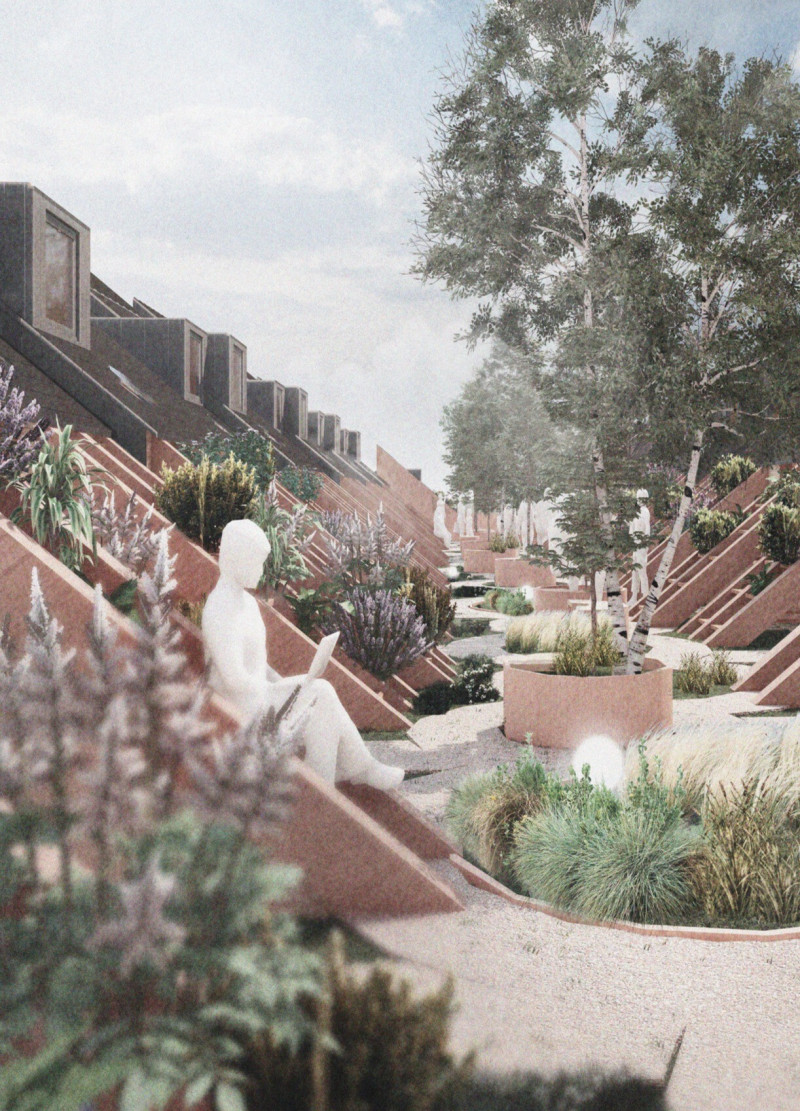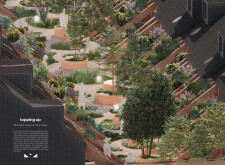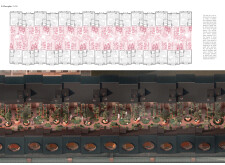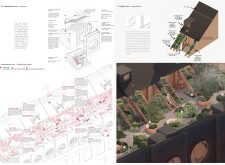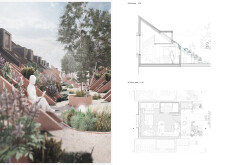5 key facts about this project
## Project Overview
The "Topping Up" microhome project is situated in an urban village characterized by high-density living. This initiative aims to address contemporary urban challenges by creating a supportive micro-community that prioritizes sustainability, community interaction, and livability. The design philosophy focuses on reimagining living spaces to foster social connections through shared areas and green environments.
### Community Engagement and Spatial Configuration
The design employs a strategy of aggregation, where a series of microhomes are arranged to optimize limited urban space while ensuring personal privacy for residents. Central to this design are communal gardens, positioned between the buildings, which serve as social hubs promoting interaction and resource-sharing. These shared spaces are instrumental in transforming casual acquaintances into lasting relationships among community members.
### Material and Environmental Considerations
A carefully curated material palette reflects a commitment to sustainability and energy efficiency. The extensive use of sustainably sourced wood introduces a warm aesthetic and fosters a connection to nature, while reinforced concrete ensures structural durability. Large glazed panels enhance natural light and promote a sense of openness, complemented by metal cladding for improved thermal insulation. Permeable paving systems facilitate water drainage management, supporting an integrated landscape that encourages biodiversity.
### Functional and Structural Design
The microhome layout prioritizes functionality through an open-concept design that enhances airflow and light penetration, contributing to a comfortable living experience. Each unit includes essential amenities along with private terraces and gardens that encourage active engagement with the surrounding environment. Structural elements such as photovoltaic panels and rainwater harvesting systems exemplify the project's commitment to sustainable living, further optimizing energy usage and resource management within the community.


